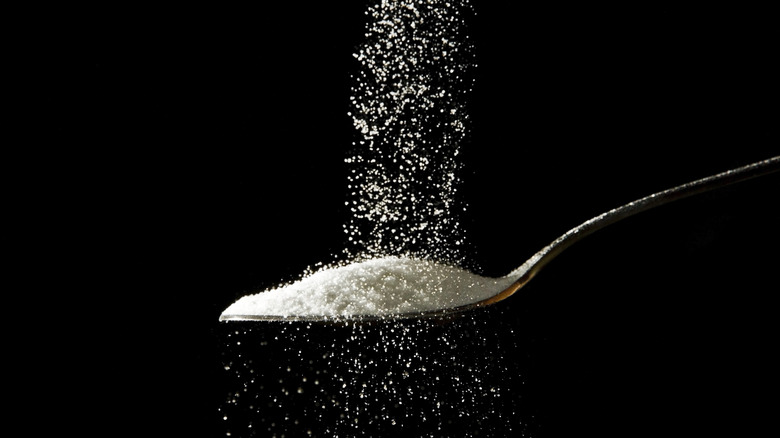What Is Isomalt And How Is It Different From Regular Cane Sugar?
When sugar isn't quite cutting it for your dessert dreams, isomalt steps into the spotlight. This sugar alternative, derived from beet sugar, has long been a favorite for cake decorators and candy makers, bringing both practicality and style. It's a little less sweet than cane sugar, but its ability to hold a shape and not caramelize under heat makes it perfect for crafting those delicate sugar sculptures gracing confections or making sugar-free candies. Isomalt might fly under the radar for most home cooks, but in the world of sweet creations, it's a go-to ingredient.
Meanwhile, cane sugar has been a trusted favorite in kitchens for generations. Whether it's mixing up a simple syrup for homemade cocktails, adding a richer sweetness with less-refined turbinado cane sugar, or contributing to that nostalgic taste that sets Mexican Coca-Cola apart, cane sugar has a versatility that's hard to beat. Ultimately, while both isomalt and cane sugar bring sweetness to the table, they operate in different culinary lanes. Cane sugar is often the star of everyday cooking, while isomalt steals the spotlight for sugar-free treats and as the key to detailed sugar work.
Cane sugar vs. isomalt: the sweet differences
When it comes to taste, cane sugar and isomalt are miles apart. Cane sugar delivers that signature sweetness we expect in everything from baked goods to butterscotch (which you can make at home with a simple molasses mix). Isomalt, on the other hand, is a bit more subtle — it doesn't scream "sweet" as loudly as cane sugar does. That's why it's often paired with other sweeteners to get the balance just right in sugar-free products. So, if you're whipping up a sugar sculpture or keeping things low-carb, isomalt will likely have your back.
Health-wise, cane sugar tends to get a bad rap for contributing to weight gain and heart disease when over-consumed. But let's be honest — when enjoyed in moderation, a bit of sugar here and there can still fit into a balanced diet. Isomalt, on the flip side, doesn't spike blood sugar like regular sugar, which is a win for those watching their glucose levels. However, it's not without its faults. Consuming too much of it can lead to digestive issues, so maybe don't eat the entire sugar-free candy stash in one go and consider leaving that decorative sugar element on your cake for visual enjoyment. Whether you're aiming for sweetness or structure, knowing how to navigate the differences between isomalt and cane sugar will keep your culinary game strong.

